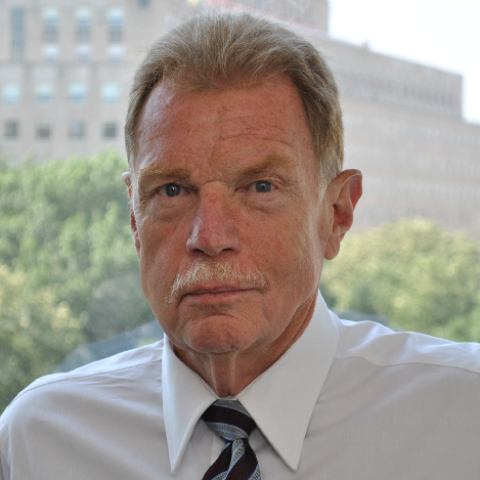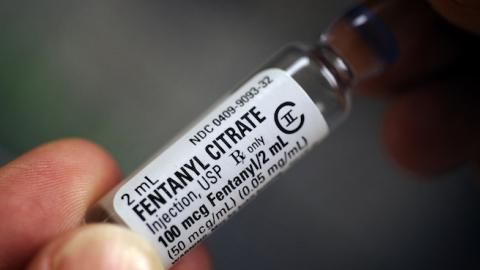The Obama Administration’s latest response to the mounting opiate addiction and overdose crisis will do virtually nothing to change the growth of the epidemic. More compelling, because of the philosophy upon which these actions are predicated, the response cannot in principle change the acceleration, because the policy is misdirected.
According to the plan announced February 2nd, there will be $920 million for “cooperative agreements” with states to expand a certain type of treatment, with $80 million for evaluation and practitioner support, and $90 million additional funds for overdose antidotes.
Yet these responses are directed at the results of the epidemic, not its causes, mitigating the fate of those already trapped in drug use, be it opiate prescriptions or heroin and the extraordinarily lethal drug fentanyl. They do not address the epidemic’s spread, or the source of the pathogens, nor prevent new victims.
There is one reference in the entire five-page document concerning the supply of the illicit heroin and fentanyl, overwhelmingly produced in Mexico, crossing the border and distributed by gangs linked to the criminal cartels.
The sole reference is: __"Since 2007, through the Merida Initiative, the Department of State has been working with the Government of Mexico to help build the capacity of Mexico’s law enforcement and justice sector institutions…"__ That is the work for decades, not an urgent mobilization. No mention of eradication, or border interdiction, or dismantling cartel finances, to name only a few needed actions.
Instead, Obama will expand physician education and monitoring programs, focus on overdose reversal through Naloxone (Narcan), fund needle distribution for drug injectors, and finally, provide opiate substitution drugs as treatment.
But even the increased funding for treatment is more political optics than genuine programs. During the time that the epidemic has surged (most steeply since 2010), the Substance Abuse and Mental Health Administration (SAMHSA) has operated with a yearly budget of $3.7 billion dollars.
Further, SAMHSA funds were in addition to the anticipated, though unrealized, programs of the Affordable Care Act, which was supposed to solve treatment deficiencies. Instead, SAMHSA tells us, “significant gaps in [insurance] coverage” remain, which results in “approximately 3.7 million Americans with behavioral health conditions without health insurance.”
Of treatment expenditures, SAMHSA already expends $1.8 billion in Prevention and Treatment Block Grants to the states. Yet this has not sufficed to prevent the epidemic. Surprisingly, the treatment appropriation request for 2016 has a $41 million decrease from the 2015 enacted budget.
In fact, a program specifically designed to address the gap in treatment need, known as Access To Recovery (ATR) and begun in the Bush Administration, supported expanded provider networks for treatment and recovery support services.
Since 2004 it has served 650,000 clients. As recently as 2012, ATR received $98 million; but the budget request for 2016 eliminates it. That is, the President’s own budget request is at cross-purposes with the sudden increases announced to the press. Moreover, why would the Administration eliminate more than $130 million in existing treatment programs, only to backfill that money on February 2nd?
The key to understanding the new plan is its intended effect on the operation of state substance abuse treatment programs. Eligibility for funding is contingent. And it is here that the Administration most reveals itself. They seek to jaw-bone states by requiring adoption of the Administration’s preferred form of treatment – the so-called Medication-Assisted Therapy (MAT), whereby those suffering from opiate addiction are offered substitute, synthetic opiates such as methadone or buprenorphine as their form of treatment. The measure of treatment success is no longer abstinence, but rather continued maintenance on opiate substitution as shown by “treatment retention.”
Traditional programs (such those that are 12-step or faith-based) that do not accept these terms will not receive the monies. Surely this is a political gift to the credentialed treatment providers, who are guaranteed clients without the burden of moving them to abstinent recovery as a measure of performance.
Previous funding was not conditioned on MAT forms of treatment. This is a serious policy change—cutting treatment programs only to replace them with government maintained addiction.
Properly used, there is an important place for MAT programs; they are valuable tools in stabilizing an opiate addict, linked to the important variables of retention in treatment, stable employment and secure housing during recovery. But such programs are best used to “bridge” those in treatment to full recovery, the goal of abstinence from further opiate use.
Instead, operating under the Obama Administration philosophy that addiction (or “drug use disorder” as they term it) is a “chronic, relapsing disease” from which one should not expect an abstinent recovery as the measure of treatment “success,” the MATs become ends in themselves, and the state of continued opiate substitution itself becomes the objective.
Hence, we see the complete Obama policy. Narcan, needles, and methadone (or buprenorphine) MAT; these are the means to maintain the dependent opiate user, serviced only through authorized providers, and their use constitutes “recovery.”
Instead of a fresh start and freedom, these programs serve up a dependent, even subjugated, client, attached in near perpetuity, receiving authorized opiates as continuous treatment, becoming thereby eligible for “recovery services” benefits. This portrait is not a measure of liberation from addiction, but rather constitutes an expanded sense of dependency.
And still the heroin and the fentanyl are produced and cross the border and are distributed by criminals for injection, whereby yet more are trapped. In response, we are offered “Naloxone tool kits for military bases.” This policy is not intended to stop the opiate epidemic and it will only destroy more American lives.

















